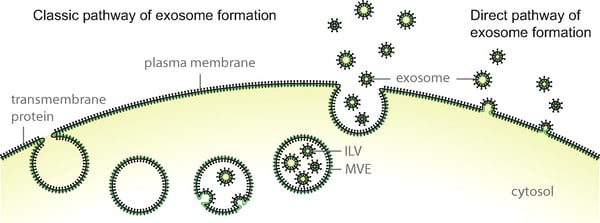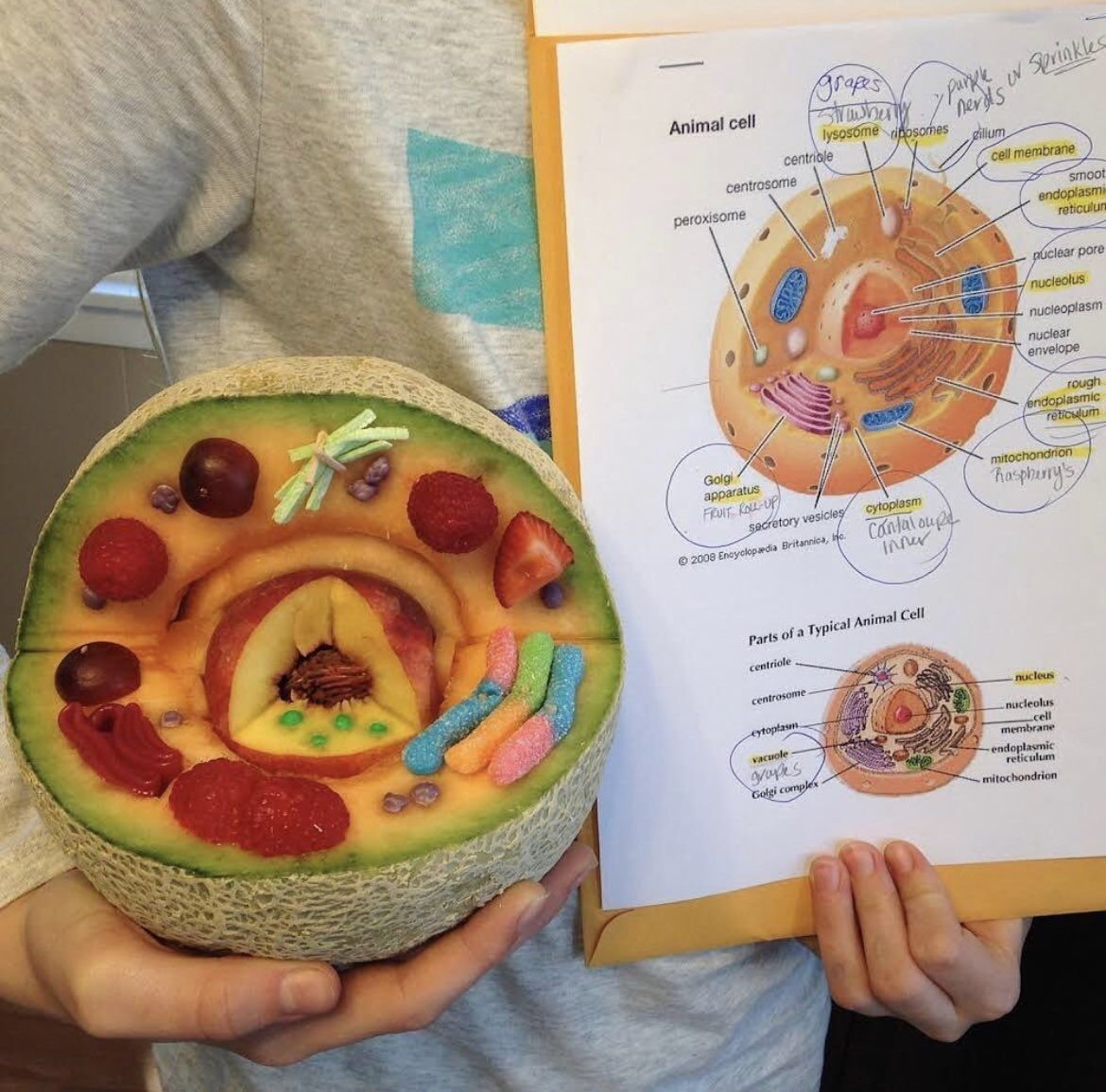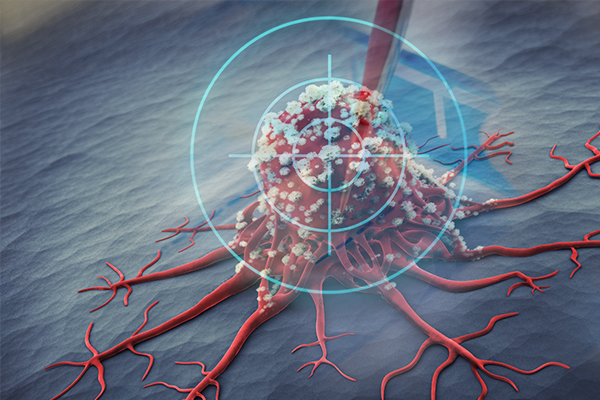Although exosomes were discovered over five decades ago, interest among the scientific community didn’t pique until much later. Specifically, in the last ten years, the number of annual publications about exosomes have almost increased by tenfold (from 1,570 published papers in 2007 to 14,000 in 2017). But what exactly are exosomes and what justifies the frenzy?
What Are Exosomes?
Exosomes can be described as extracellular vesicles. The term exosome was first described 30 years ago as tiny bubbles with a diameter of about 40-100 nm that can be secreted by most cells. It has a lipid membrane structure and is internally coated with proteins, mRNAs, microRNA, and other substances. Apart from exosomes, there are also other types of microbubbles in cells (such as apoptotic bodies and extranuclear particles), each type has a different function. Exosomes are often overlooked as a separate category, but they are a functionally different type of vesicle.
A Brief History of Exosomes
Outer membrane vesicles (also known as extracellular vesicles) were first discovered just over five decades ago. First, scientists thought it was the waste released through cytoplasmic membrane shedding. Then, in 1987, scientists coined the term exosomes but they were soon forgotten by researchers again, until recent years. In 1989, scientists recognized exosomes because the transferrin was lost during a study of the development of reticulocytes into red blood cells.
How Are Exosomes Formed?
Exosomes are formed by intraluminal vesicles (ILVs), but not all ILVs can form exosomes. Further than that, their formation mechanism in the endosome is still unclear. Most of the traditional membrane sprouting processes entail the deformation of the membrane to encapsulate the organelles into the cytoplasm. During the formation of the ILV, the membrane sprouts away from the cytoplasm and enters the endosome. This non-traditional sprouting approach not only occurs in the formation of ILV, but also when the coated virus emerges from the cytosol and undergoes cytokinesis.
 van der Pol, E., Böing, A. N., Harrison, P., Sturk, A., & Nieuwland, R. (2012). Classification, functions, and clinical relevance of extracellular vesicles. Pharmacological reviews, 64(3), 676-705.
van der Pol, E., Böing, A. N., Harrison, P., Sturk, A., & Nieuwland, R. (2012). Classification, functions, and clinical relevance of extracellular vesicles. Pharmacological reviews, 64(3), 676-705.
ILVs (including exosomes) have at least two mechanisms: one depends on endosomal sorting complexes required for transport (ESCRT), and one does not depend on ESCRT.
Why Are Exosomes So Popular?
First, exosomes are thought to be a medium for cell communication and intercellular macromolecular transport.
Second, in the past decade, exosomes have played an important role in the transmission of proteins, lipids, mRNAs, miRNAs, and DNA, and have been the cause of many diseases.
Third, exosomes have a lipid bilayer membrane structure. Compared to artificially synthesized polymers, exosomes may be developed to be a natural carrier of specific drugs. They can protect the substances coated within and can target specific cells or tissues. These all make them a well-targeted delivery system.
Recent Developments in Exosome-related Research
Exosomes may be the real cause for the spread of cancer
The National Cancer Center of Spain (CNIO) Microenvironment and Cancer Metastasis Team, Weill Cornell Medical College, and the Memorial Sloan Kettering Cancer Center jointly confirmed that tumors release millions of exosomes carrying their protein and genetic content. They act like "radars" that ensure the receiving organs are ready to receive the tumor cells. In particular, exosomes trigger the necessary molecular reactions in the receiving organs — inflammation, angiogenesis, etc. to welcome the tumor cells so that they can proliferate.
Drug delivery - Treatment of Huntington's disease (HD) with siRNA-loaded exosomes
Finding the suitable delivery system is a major obstacle in the treatment of neurological diseases such as HD. Studies at the University of Massachusetts Medical School have shown that hydrophobically modified small interfering RNAs (hsiRNAs) can efficiently enter co-incubated exosomes without altering vesicle size distribution or integrity. hsiRNA exosomes loaded with molecules that target Huntington mRNA can be efficiently internalized by mouse primary cortical neurons and promote dose-dependent silencing of Huntington mRNA and protein. The widespread distribution and efficacy of hsiRNA-containing exosomes delivered to the brain is expected to improve the treatment of HD and other neurodegenerative diseases.
Exosome sequencing - The new frenzy in tumor liquid biopsy
Sequencing of genetic material by liquid biopsy is expected to be one of the most important methods for cancer diagnosis. Exosomes can wrap double-stranded large DNA fragments (greater than 2.5 kb, perhaps even 10 kb or more). In addition, exosomes also contain a large amount of RNA, both miRNA and mRNA can be easily analyzed by second-generation sequencing. Since the exosomes of DNA and RNA are not as dispersed as the free tumor DNA in serums, exosomes are an attractive target for sequencing tumors. In addition, tumor-derived exosomes can also be significantly enriched in various biological fluids. Based on the above advantages, exosomal DNA and RNA can be considered as a reliable sequencing material for performing tumor liquid biopsy.



